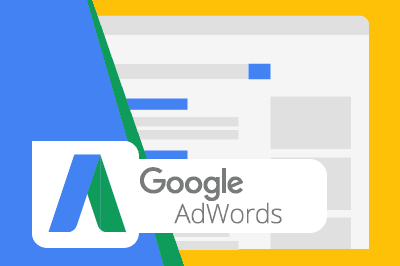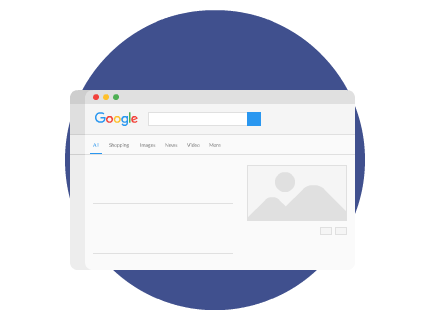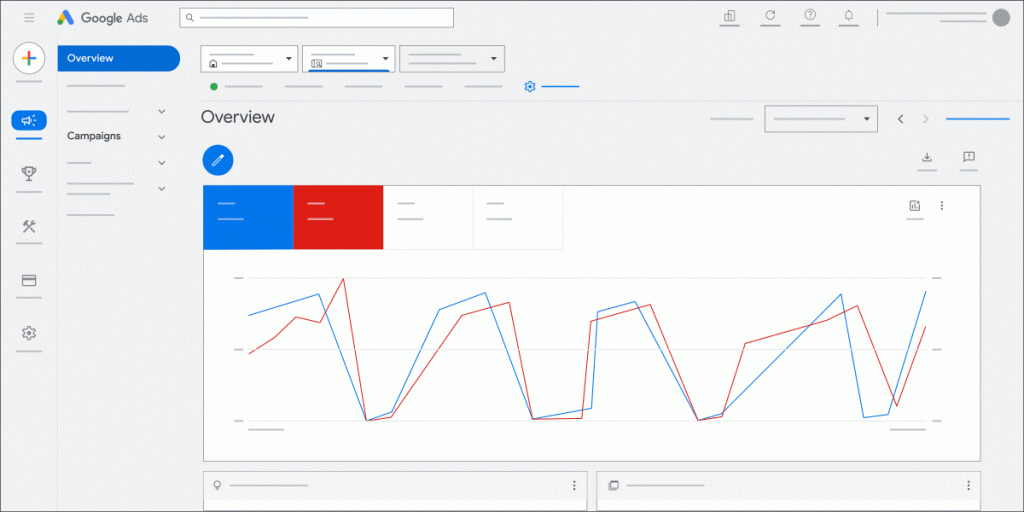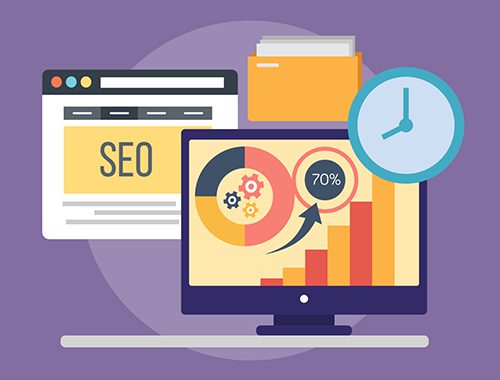Top Google Ads Metrics & KPIs
In today’s fast-paced world, making your adverts stand out from the crowd is no small feat. We’ve all encountered this challenge, whether we’re dipping our toes into digital marketing for the first time or we’re well-versed veterans.
A crucial aspect that brings this point home is the significance of Google Ads metrics. These figures are vital as they shine a light on whether our campaigns are soaring or need a bit more finesse.
Fret not, though; we’ve rolled up our sleeves and delved into the nitty-gritty so you can breathe easy. This piece will navigate you through essential Google Ads metrics and KPIs to keep your eye on – such as conversion rate, click-through rate, and return on ad spend.
With a grasp of these concepts, you’ll be poised to fine-tune your campaigns for enhanced outcomes. Ready to give those ads a boost?
What is Digital Marketing and Why is it Important?
Digital marketing involves promoting products or services online. It uses various channels like search engines, social media, and websites. This type of marketing is important because it connects us with a wide audience.
We can reach potential customers at any time.
Google Ads is a key part of digital marketing. It helps us measure campaign performance through metrics and key performance indicators (KPIs). Monitoring metrics like Return on Ad Spend (ROAS) and Cost per Acquisition (CPA) is crucial.
These numbers show how well our ads are doing. They reveal how many people click on our ads and how much we spend. In our experience, understanding these metrics has improved our campaigns.
We see which ads perform best and where to focus our budget.
Types of Digital Marketing
Digital marketing covers many methods. Each type helps us reach our goals in different ways.
SEO
SEO is vital for improving our online visibility. It stands for Search Engine Optimisation. This process helps our website rank higher on search engines like Google. Higher rankings mean more people can find us.
The more visitors we attract, the better our chances for conversions.
We focus on using relevant keywords. Keywords help search engines understand the content. This boosts our click-through rate (CTR) and ad performance. Tracking metrics like Cost per Click (CPC) and Conversion Rate is essential.
These metrics show us how well our SEO efforts are working. Results can vary, but the right approach leads to improved Return on Ad Spend (ROAS).
Quality content also matters. Engaging content attracts users and keeps them on the site. We aim for a high Quality Score too. This score helps us rank better and lower our costs in Google Ads.
In our experience, a strong SEO strategy enhances overall performance in digital marketing.
Content Marketing
Content marketing plays a vital role in digital marketing. We create valuable content to attract our target audience. This content can include blogs, videos, and infographics. It helps us build trust and authority in our field.
Through content marketing, we aim to connect with potential customers.
Tracking our metrics is essential. We monitor conversions and click-through rates. These numbers show how well our content performs. High impressions and clicks indicate good reach.
We also pay attention to the click-through rate (CTR) and cost per click (CPC). These advertising metrics inform us if our content is effective.
Engaging content drives user action. We seek to improve our return on ad spend (ROAS) and lower cost per acquisition (CPA). Each piece of content should lead our audience to take the next step, whether it is visiting our site or making a purchase.
Understanding these components helps us refine our strategies for better results.
Social Media Marketing
Social media marketing plays a key role in reaching our audience. We use platforms like Facebook, Instagram, and Twitter to connect with users. These platforms allow us to share content and engage with potential customers.
We can track how well our posts perform. Metrics like clicks, shares, and comments give us insights into our reach and effectiveness. The number of ad impressions tells us how often our ads appear online.
We need to pay attention to these digital advertising metrics to improve our ads.
Engagement is vital for success in social media marketing. We create engaging content that speaks to our audience. It is important to understand our target audience. By tailoring our content, we can boost our click-through rates.
Our goal is to drive conversions. This means we track conversion rates carefully. We also keep an eye on advertising KPIs like cost per click (CPC) and return on ad spend (ROAS). Monitoring these key performance indicators helps us make smart decisions for future campaigns.
PPC
PPC, or Pay-Per-Click, is a key part of digital marketing. It allows us to show ads and pay only when someone clicks on them. Google Ads is a major platform for PPC. We can track several important metrics to gauge our ad performance.
These include Click-Through Rate (CTR), Cost Per Click (CPC), and Conversion Rate.
Monitoring metrics like CTR helps us see how well our ads attract clicks. A higher CTR means more people find our ads interesting. CPC tells us how much we spend for each click. Keeping an eye on these figures helps us manage our budget wisely.
We should also track the Return on Ad Spend (ROAS) and Cost per Acquisition (CPA). These metrics show how well our campaigns convert clicks into customers.
Impressions matter too. They tell us how often our ads appear on Google. Tracking these allows us to understand our reach and visibility. We should also watch Quality Score and average position.
These KPIs help us improve our ad’s placement on the page. Understanding these metrics ensures we can optimise our ad performance effectively.
Affiliate Marketing
Affiliate marketing is a powerful way to promote products online. We earn a commission for every sale made through our referral links. This method connects businesses with individuals who want to sell their products.
We can reach new audiences without creating our own products.
This type of marketing uses performance metrics to measure success. We track key performance indicators (KPIs) like conversion tracking and click-through rates. Understanding these metrics is essential for ad performance tracking.
They help us see how well our campaigns are doing. Monitoring metrics like cost per click (CPC) and return on ad spend (ROAS) gives us insight into how effective our efforts are.
Affiliate marketing also requires us to avoid common mistakes. Misinterpreting data can lead to poor choices. Targeting the wrong audience can waste time and money. Proper planning and tracking are vital for success.
This leads us to consider how we can integrate digital marketing into our overall strategy.
The Role of KPIs in Digital Marketing
KPIs help us measure the success of our digital marketing efforts. They show us what works and what needs improvement.
Understanding Google Ads Metrics
Google Ads metrics are critical for measuring how well our campaigns perform. They help us understand the health and effectiveness of our ads. We should monitor key metrics such as Click-Through Rate (CTR), Cost Per Click (CPC), and Return on Ad Spend (ROAS).
Tracking these metrics lets us see how many people click our ads and how much we spend on them. This information is vital for making informed decisions.
Monitoring impressions is essential too. It shows how often our ads appear on Google. Understanding our average position helps us know where our ads show up on the results page. High-quality scores can lead to better ad placements.
Using this data allows us to optimise our campaigns. We can evaluate performance and make changes that improve our results.
Regularly checking our Google Ads Performance Metrics helps us stay on top of our advertising goals. We can track conversions and learn which ads drive the most sales. Knowing our Cost per Acquisition (CPA) also helps manage budgets wisely.
This way, we ensure our advertising strategies yield the best possible outcome.
Tracking Conversions and Click-Through Rates
Tracking conversions and click-through rates (CTR) is essential for our Google Ads campaigns. These metrics show how well our ads perform. The click-through rate tells us how many people click on our ads after seeing them.
A higher CTR often means our ads are engaging and relevant.
Conversions show how many users take a desired action after clicking our ads. This could be making a purchase or signing up for a newsletter. Monitoring conversions helps us understand the effectiveness of our campaigns.
Key Performance Indicators (KPIs) like Cost per Click (CPC) and Return on Ad Spend (ROAS) give us a clearer view of our ad performance.
We also need to watch impressions. This tells us how many times our ads appear in searches. Impressions indicate our reach and visibility. Tracking these metrics helps us make smarter decisions.
It guides us in improving our advertising strategies and optimising our budget for better results.
Evaluating Ad Performance
We can evaluate ad performance by looking at key metrics. Google Ads metrics show us how well our campaigns are doing. Important KPIs to consider are Click-Through Rate (CTR), Cost Per Click (CPC), and Conversion Rate.
These numbers help us understand if our ads attract clicks and lead to conversions. A higher CTR means more people are interested in our ads. We should also watch the Cost Per Acquisition (CPA) to see how much we spend to gain a customer.
Further, analysing metrics like Return on Ad Spend (ROAS) gives us insight into profitability. We also need to track impressions to gauge our reach. The average position of our ads tells us where they show up on the search results page.
Monitoring these Google Ads metrics helps us optimise our campaigns for better results. Understanding these metrics ensures our online advertising KPIs are on track.
Common Mistakes to Avoid in Digital Marketing
We often make mistakes that can hurt our digital marketing efforts. These errors can lead us off track and waste resources. Knowing these pitfalls helps us improve our approach. To learn more about avoiding these common traps, keep reading!
Misinterpreting Data
Misinterpreting data can harm our Google Ads campaigns. We might misunderstand key performance indicators (KPIs) like Cost Per Acquisition (CPA) or Click-Through Rate (CTR). If we see a high number of clicks but low conversions, we may think our ads are effective.
In reality, they may not reach the right audience.
Monitoring metrics like Return on Ad Spend (ROAS) is vital. A low ROAS can signal we are wasting money. We must look at the full picture, including impressions and ad position, to understand our ad performance.
Without careful analysis, we risk making poor decisions that can hurt our campaigns.
Avoiding these common mistakes helps us use advertising analytics effectively. This allows us to optimise our strategy. Next, we will explore how to target the right audience.
Targeting the Wrong Audience
Targeting the wrong audience can waste our marketing budget. Google Ads metrics, such as Click-Through Rate (CTR) and Cost Per Click (CPC), become less effective when our ads reach the wrong people.
We may see high impressions, but if the audience is not right, clicks will not convert. This means a poor Conversion Rate and high Cost per Acquisition (CPA).
Our aim is to reach those who care about our products. Poor audience targeting leads to low engagement. We need to set clear goals and identify our target audience. Understanding Google Ads metrics helps us track our efforts.
Monitoring Return on Ad Spend (ROAS) allows us to see what works. Adjusting our strategy based on data will improve our campaigns.
Inadequate Budget Allocation
Inadequate budget allocation can hurt our Google Ads campaigns. Without enough funds, we risk missing out on key opportunities. Important metrics like Cost per Click (CPC) and Return on Ad Spend (ROAS) may suffer.
A low budget limits the number of clicks we can get. This leads to fewer conversions and a lower Conversion Rate. We need to set a realistic budget to match our goals.
Many businesses make the mistake of not reviewing their spending. This can lead to wasted resources. Monitoring costs and adjusting the budget is essential for success. For instance, if our CPC is too high, we might need to refine our ads or target a better audience.
Google Ads metrics like Click-through Rate (CTR) provide insights on the effectiveness of our spending.
Knowing how to allocate our budget helps improve ad performance. We become aware of how much to invest for better results. Tracking metrics like the number of conversions is crucial.
It shows how well we are doing. This focus on budget will lead us to the next part, integrating digital marketing into our strategy.
Integrating Digital Marketing into Your Strategy
Integrating digital marketing into our strategy is key for success. We need to set clear goals and know our target audience well.
Setting Goals and Identifying Target Audience
Setting clear goals is key to our success in digital marketing. We want to know what we aim to achieve. Goals help us measure our progress. We should focus on metrics like Click-Through Rate (CTR) and Return on Ad Spend (ROAS).
These metrics show us how well our campaigns are doing. Tracking Cost Per Acquisition (CPA) is also important. It tells us how much we spend to gain a customer.
Identifying our target audience is just as crucial. We need to know who our ads should reach. This helps us avoid mistakes like targeting the wrong people. Knowing our audience improves our chances of conversions.
It guides us in creating content that speaks to them. We can use Google Ads to find valuable insights. Numbers like impressions and clicks give us a clear view of our reach. Understanding these factors ensures our campaign is effective.
Creating Engaging Content
We move from setting goals and identifying our target audience to creating engaging content. Engaging content helps us connect with our audience. It draws them in and keeps them interested in what we offer.
High-quality content can improve our Click-Through Rate (CTR) and drive more clicks to our ads.
We should focus on our audience’s needs and interests. Using clear language and visuals can make our messages stronger. Including key metrics like Cost Per Click (CPC) and Conversion Rate can guide our content creation.
These metrics show us what works and what does not. We can adjust our content based on this feedback.
Our ads should stand out. This helps gain impressions and boosts visibility. We can use attention-grabbing headlines and visuals to improve performance. Staying aware of our Return on Ad Spend (ROAS) will help us understand our content’s effectiveness.
We learn from every campaign. This ongoing process helps us create content that resonates with our audience.
Utilising Paid and Organic Strategies
Utilising paid and organic strategies is key for a successful digital marketing plan. Paid ads, like Google Ads, give us instant visibility. They appear at the top of search results.
This can lead to more impressions and clicks. We can track important metrics, such as Click-Through Rate (CTR) and Cost Per Click (CPC). These metrics help us understand how our ads perform.
They indicate how effective our spending is.
Organic strategies take longer but are equally important. Search Engine Optimisation (SEO) helps us attract visitors without paying for ads. Good SEO improves our website’s ranking.
This leads to free traffic over time. By combining both strategies, we maximise our reach. We can engage a broader audience while controlling our marketing costs. Monitoring both paid and organic performance metrics keeps us on track.
The next step is to set clear goals and identify our target audience.
Regularly Measuring and Analysing Performance
Regularly measuring and analysing performance is vital for our Google Ads campaigns. We need to focus on key metrics like Click-Through Rate (CTR), Cost Per Click (CPC), and Conversion Rate.
These metrics show how well our ads are doing. They help us understand if our ads are reaching the right audience. Tracking how many times our ads appear can also tell us about our visibility.
We look at Return on Ad Spend (ROAS) and Cost Per Acquisition (CPA) to know our ad’s effectiveness. Impressions and clicks give us a clear picture of our reach. Monitoring these KPIs helps us tweak our campaigns for better results.
Evaluating our ad performance regularly allows us to make data-driven decisions for future campaigns.
Conclusion
We have covered key Google Ads metrics and KPIs. Monitoring these figures helps us understand our ad performance. Metrics like Click-Through Rate and Cost per Click are essential for success.
Using these tools is practical and easy. They can lead to great improvements in our advertising efforts. Let’s apply what we have learned and enhance our campaigns today.
FAQs
1. What are the top Google Ads Metrics & KPIs?
The top Google Ads Metrics & KPIs include Clickthrough rate (CTR), Cost Per Click (CPC), Return on Ad Spend (ROAS) and Cost Per Acquisition (CPA).
2. Why is the ClickThrough Rate important in marketing metrics?
ClickThrough Rate or CTR is crucial because it shows how many people click your ad after seeing it, which can indicate the effectiveness of your ad.
3. Can you explain what Cost Per Acquisition means?
Cost Per Acquisition, also known as CPA, measures how much you spend to acquire a new customer through an advertisement.
4. How does Return on Ad Spend help measure success in advertising?
Return on Ad Spend or ROAS helps determine whether the money spent on ads brings a good return by comparing revenue generated from ads against their cost.











